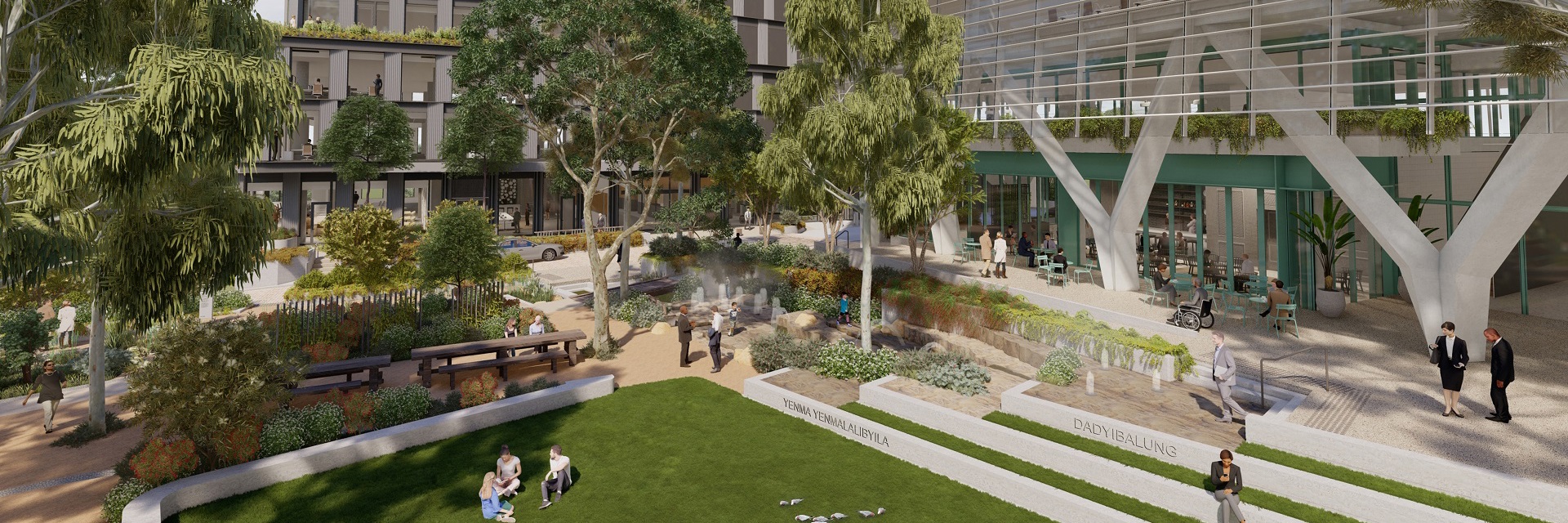What does the ‘workplace of the future’ look like?
What does the ‘workplace of the future’ look like?
The combination of emerging technology and a global pandemic have served to accelerate change in Australian workplaces, with IT industry insiders estimating that we’ve packed an expected five-to-ten years of progress into a couple of years. So, what are the big trends of the moment?
Using tech to innovate the hybrid workplace
For our modest population, Australia is a country that has a habit of punching above its weight. While you undoubtedly know about our success on the sporting field, you might not realise that Australia is also a leader when it comes to work habits, with more than 34% of employees dividing time between home and office in a hybrid work arrangement.
During the pandemic lockdowns, organisations rushed to adapt to work from home, prompting investment in collaboration technology and laptops. Major vendors like Microsoft, HP and Lenovo have been adding hybrid-friendly features to newer devices, including AI-driven cameras and microphones for better online meeting experiences.
Offices, too, have been getting upgrades to their meeting technology. As more and more organisations are joining meetings remotely and from on-premises, the focus has been on making the virtual meeting user experience more ‘real’ and more seamless. Smart cameras that avoid distortion of colleagues at the edge of the room, and integrated digital whiteboards where people in the room and working remotely can workshop together, are among the features making online meetings more productive.
Better data for better health and wellbeing
Given the extraordinary effect of the pandemic, it is unsurprising that healthy workplaces are a priority. Using data and tech, many organisations are transforming their buildings and offices to provide optimal conditions for the wellbeing of their people. For example, connected sensors can monitor occupancy rates and footfall, air quality and humidity, prompting automated responses such as adjusted air flow to create perfect conditions.
Outside spaces and fresh air are featuring more in building design, thanks to increased awareness of occupants’ physical and mental health benefits. At MPark our flagship workplace development located in the heart of Macquarie Park’s innovation precinct, we have monitors that measure indoor and outdoor air quality to help optimise indoor air quality1.
Having this information in real time has another advantage. Aside from improving workplace comfort, it can reduce energy consumption, in particular for air-conditioning systems, which can adapt to conditions almost instantly. This reduces environmental impact and helps businesses to better target and achieve ESG benchmarks and standards.
Improving energy efficiency without workplace disruption
From design to construction, to data monitoring and building management, technology is making commercial buildings more efficient. One of the exciting emerging trends is digital twin technology, which lets building owners and managers combine virtual models of physical buildings with real time data from building systems. They can test out space optimisation and energy consumption, even predictive maintenance, without disrupting tenants and customers.
When leasing space, prospective tenants can now expect options such as virtual 3D experiences like Inspace that enable them to create interactive maps, online site tours and walk-throughs. Colleagues from other cities or even overseas can view and connect with the properties from afar, saving on the cost and environmental impact of travel.
Using customer experience platforms for better staff experiences
Progressive commercial buildings are embracing the wave of new technologies to give tenants a better experience. In turn, organisations are raising their expectations of the premises they lease. At MPark, we are introducing a digital customer experience platform that brings data, customer experience, community creation, access and space management together under a single platform.
Tenants can access information and planned events on the platform, opening up onsite services and amenities, and keeping them up to date with what is happening around the precinct1. In this way, technology supports the creation of a community, something that the post-pandemic, hybrid working population craves.
Increased connectivity for enhanced collaboration
The increase in hybrid working and adoption of cloud technology mean that connectivity is more important than ever. Even within the office, the more collaborative approach means that people no longer sit at a desk all day, instead working and joining meetings throughout a building or campus. Fifty-four percent of business leaders are either in the process of redesigning workplaces, or plan to in the near future, to better accommodate hybrid workers2.
At MPark, we raised the bar by building a precinct-wide wireless network into the design, as well as a 5G in-building mobile phone coverage system, and you can expect to see more of this enhanced connectivity in future workplaces.
As the first true digital native generations enter the workplace, employee expectations of fast, mobile technology and superior user experience will play a significant part in attracting and retaining the best skilled resources. Smart, connected workplaces of the future will have to be ready to adapt so that the businesses that occupy them can thrive.
For over 70 years, Stockland has been creating thriving communities where people live, shop and work.
*1 https://www.stockland.com.au/leasing/workplace/nsw/m_park Stockland
*2 Tech savvy: How proptech is reshaping institutional real estate – EG, 27 May 2022
